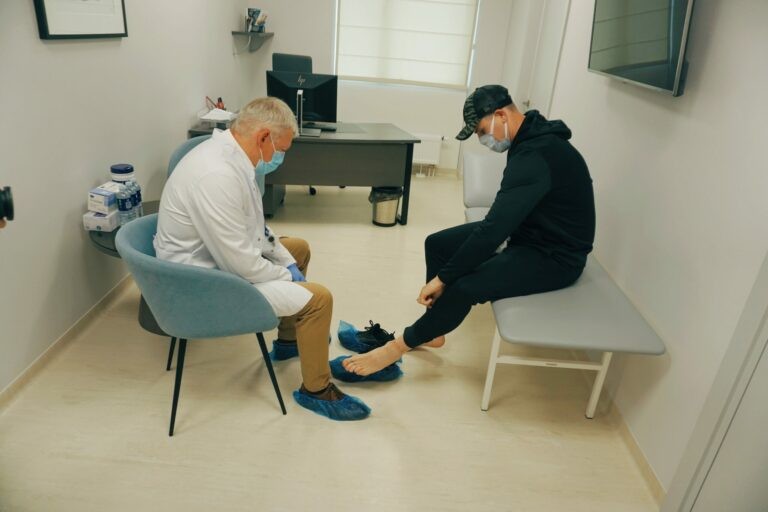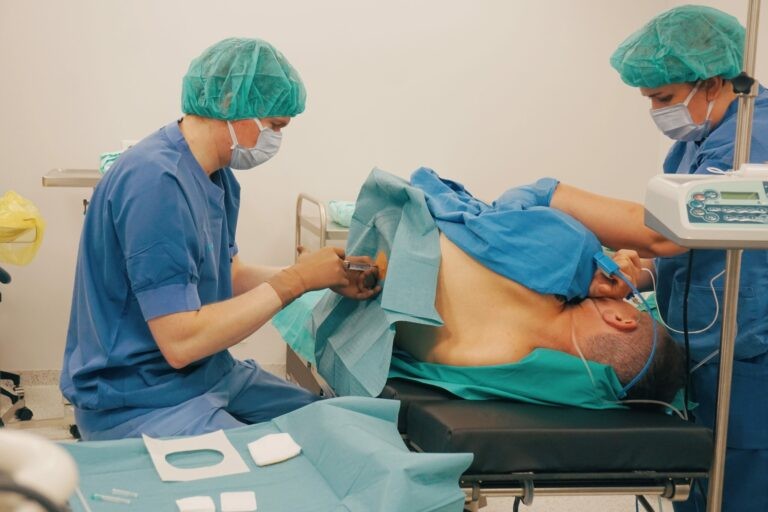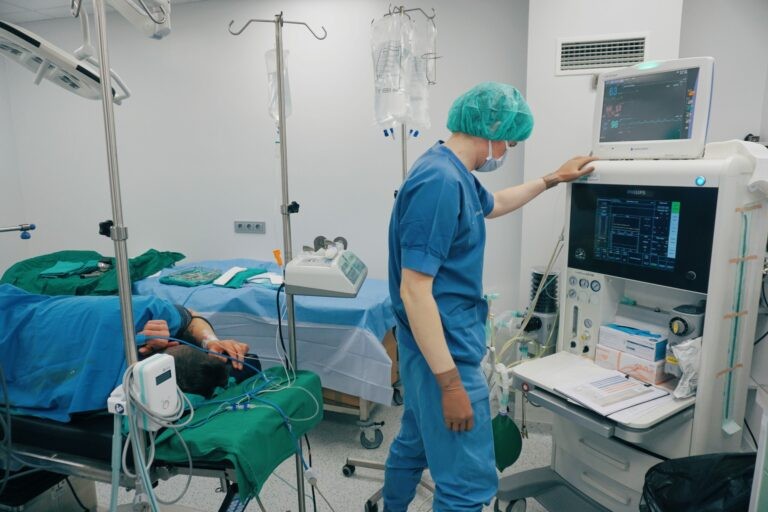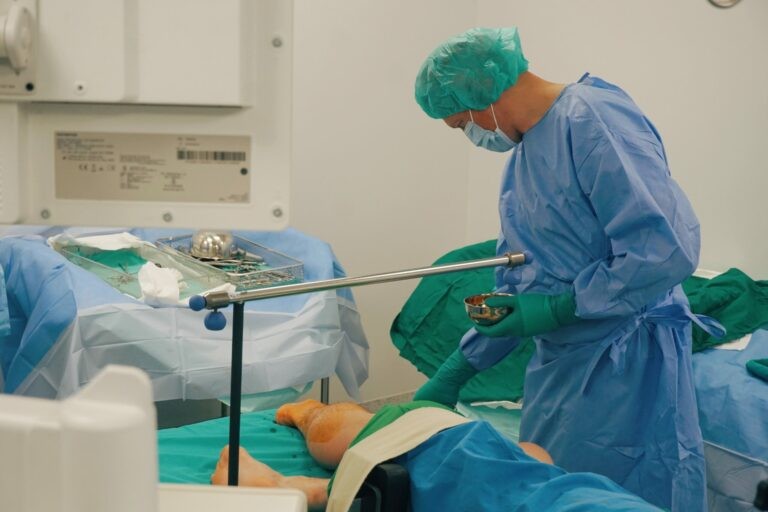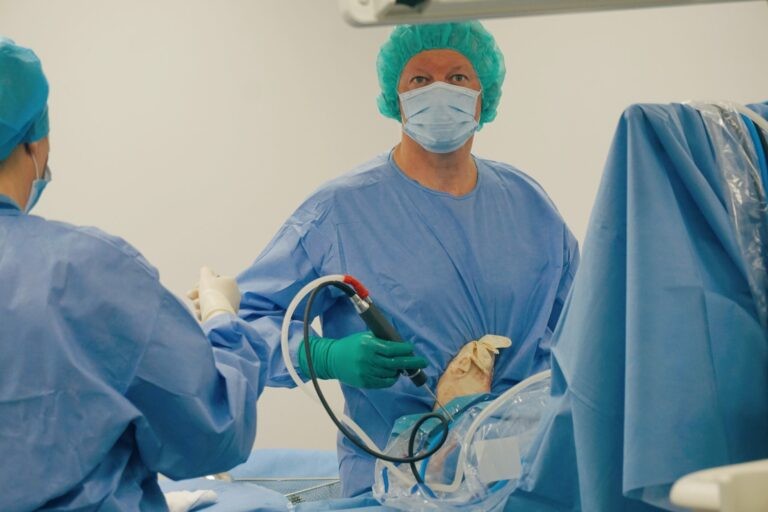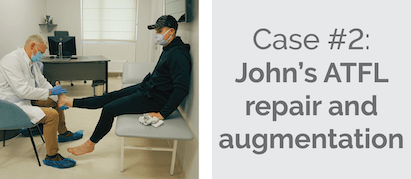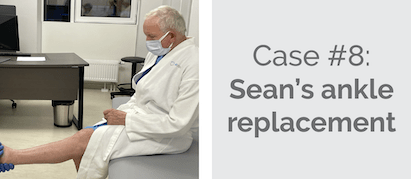John's story
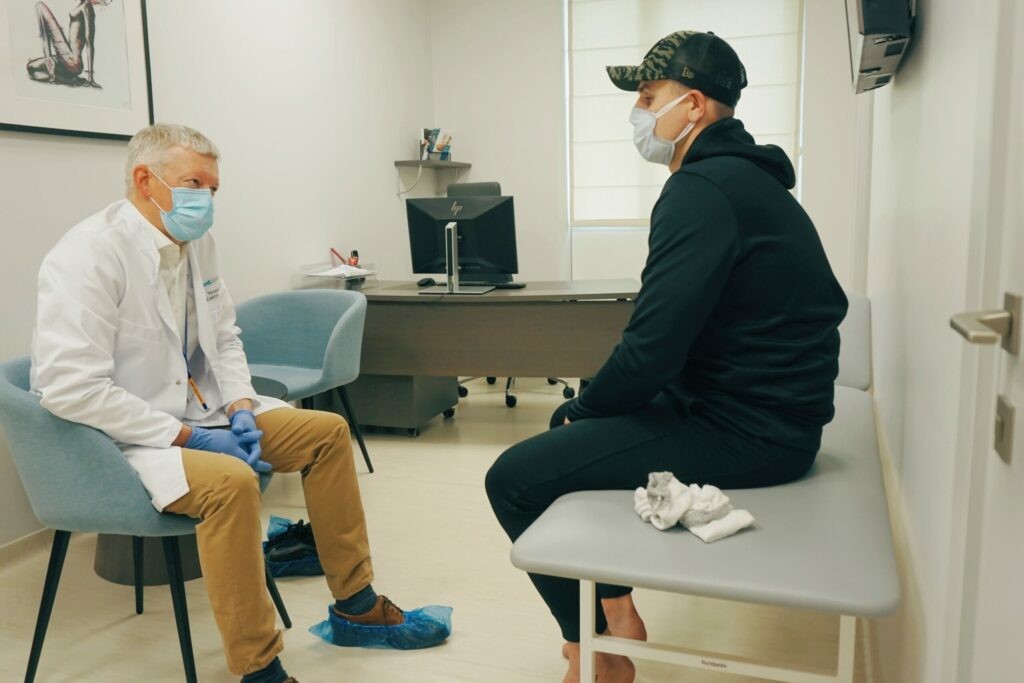
Our patient John had been complaining about ankle pain and instability for a while now. As a sports athlete and a father of 8, John chose to seek treatment. His main goal was to get back to playing soccer and boxing, as he has been doing his whole life. Given the fact that his ankle joint was unstable and swollen, it was decided to move forward with ankle arthroscopy.
John's diagnosis
John was diagnosed with a rupture of ligaments in the lateral side of the ankle joint and ankle joint instability after injury.
Ankle instability usually causes strain or stretch, but in more severe forms, it may cause a sprain or a tear in the ligaments. This can lead to a sense of instability (giving way) in the ankle and frequent ankle sprains even with minor trauma or twist. For patients like John, conservative treatment is not successful, and surgery is required to either tighten up the ligaments supporting the outside of the ankle, or to reconstruct them.
Closer look at John's ankle injuries
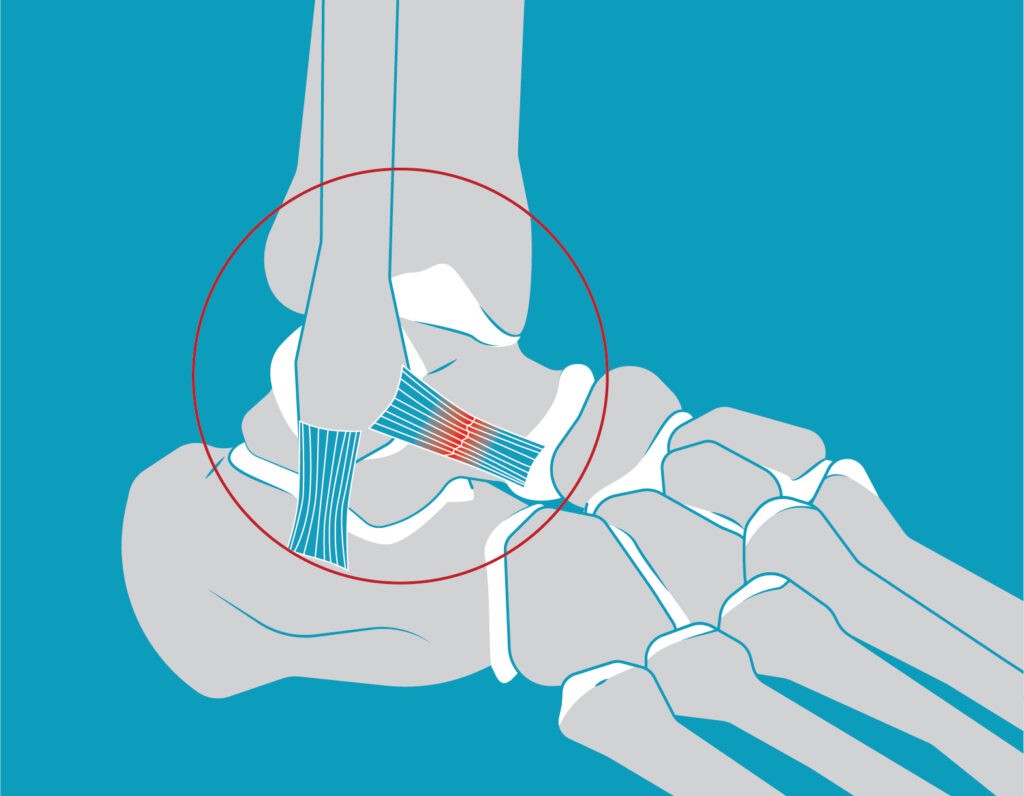
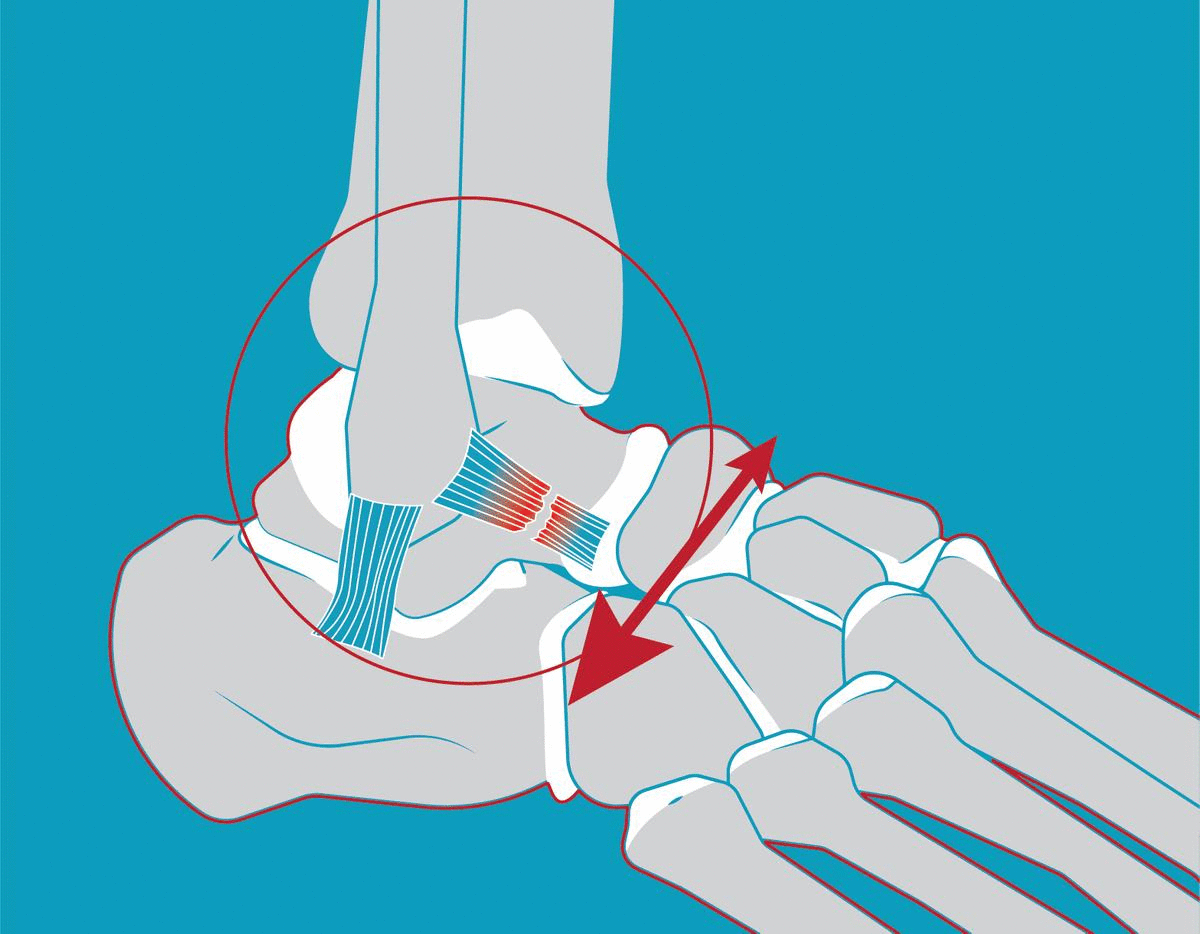
Performing the surgery
Ankle arthroscopy is a minimally invasive joint surgery that is designed to treat ankle pain and improve overall joint function. It is performed through small key-hole incisions with a special miniature camera (an arthroscope) that visualises cartilages, ligaments, and bones, inside the joint.
During John’s surgery joint synovectomy and debridement was done and after confirming joint instability, a small incision was made to refrain the lateral ligaments of the ankle, with additional ligament reinforcement with implant.
At the time of the surgery, after the ankle joint ligaments are restored, they are reinforced with additional implants, which will protect the restored ligaments throughout the post-surgery period. This step will allow early rehabilitation of the ankle joint function and will give protection against subsequent ligament injury.
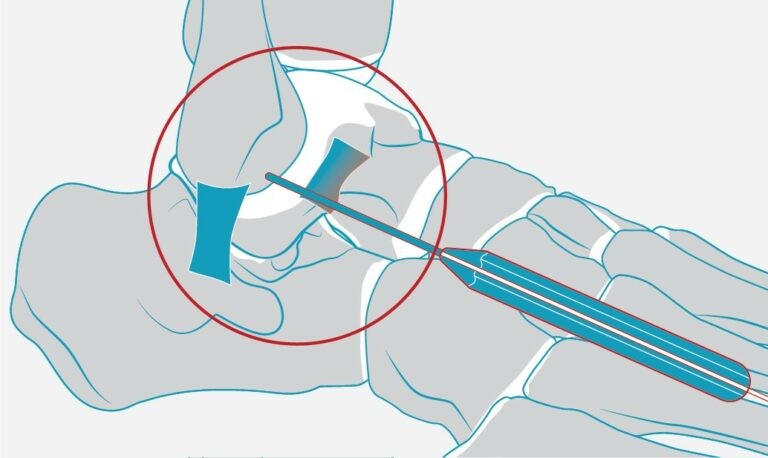
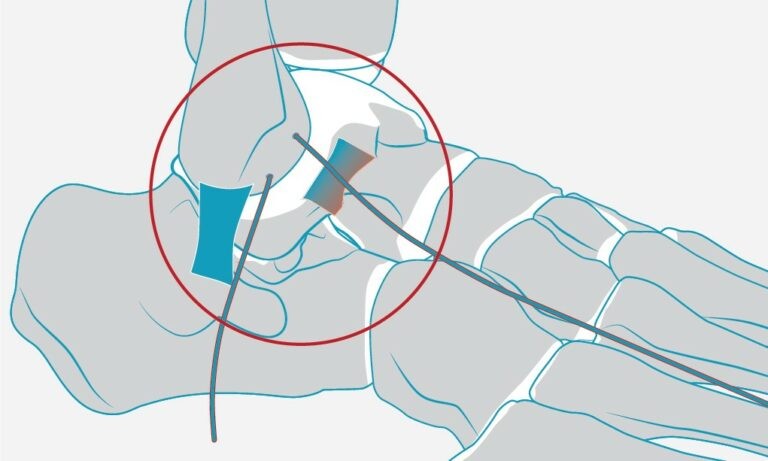
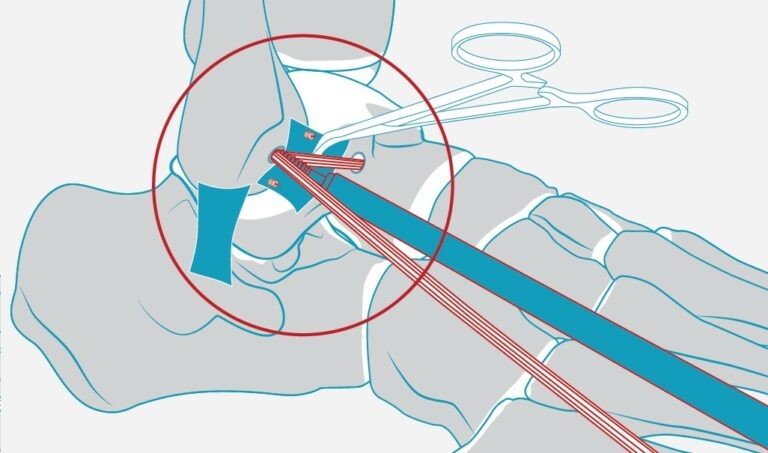
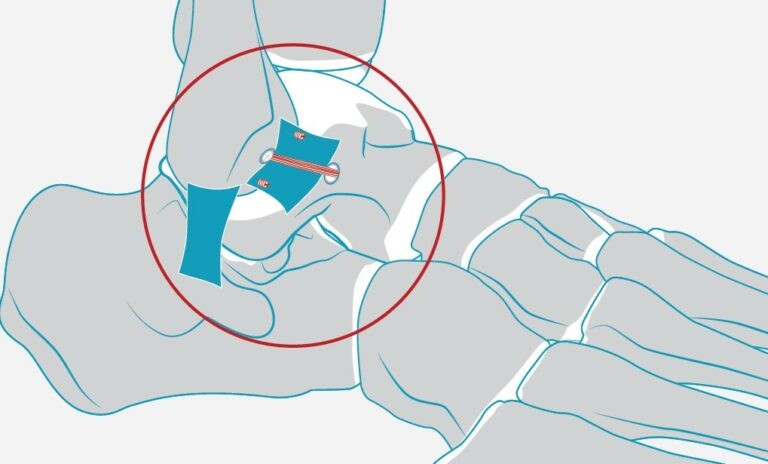
Who can benefit from ankle arthroscopy?
Ankle arthroscopy is performed when all non-surgical treatments have not provided adequate relief.
Because of the relatively short recovery, it is a favourable choice for many athletes, especially having in mind that they have higher risk of traumas. Patients can expect to return to professional sports as soon as 4-6 weeks post-surgery, however, it requires gradually increasing activity levels and training difficulty. The time it takes to recover completely is different for every patient.

